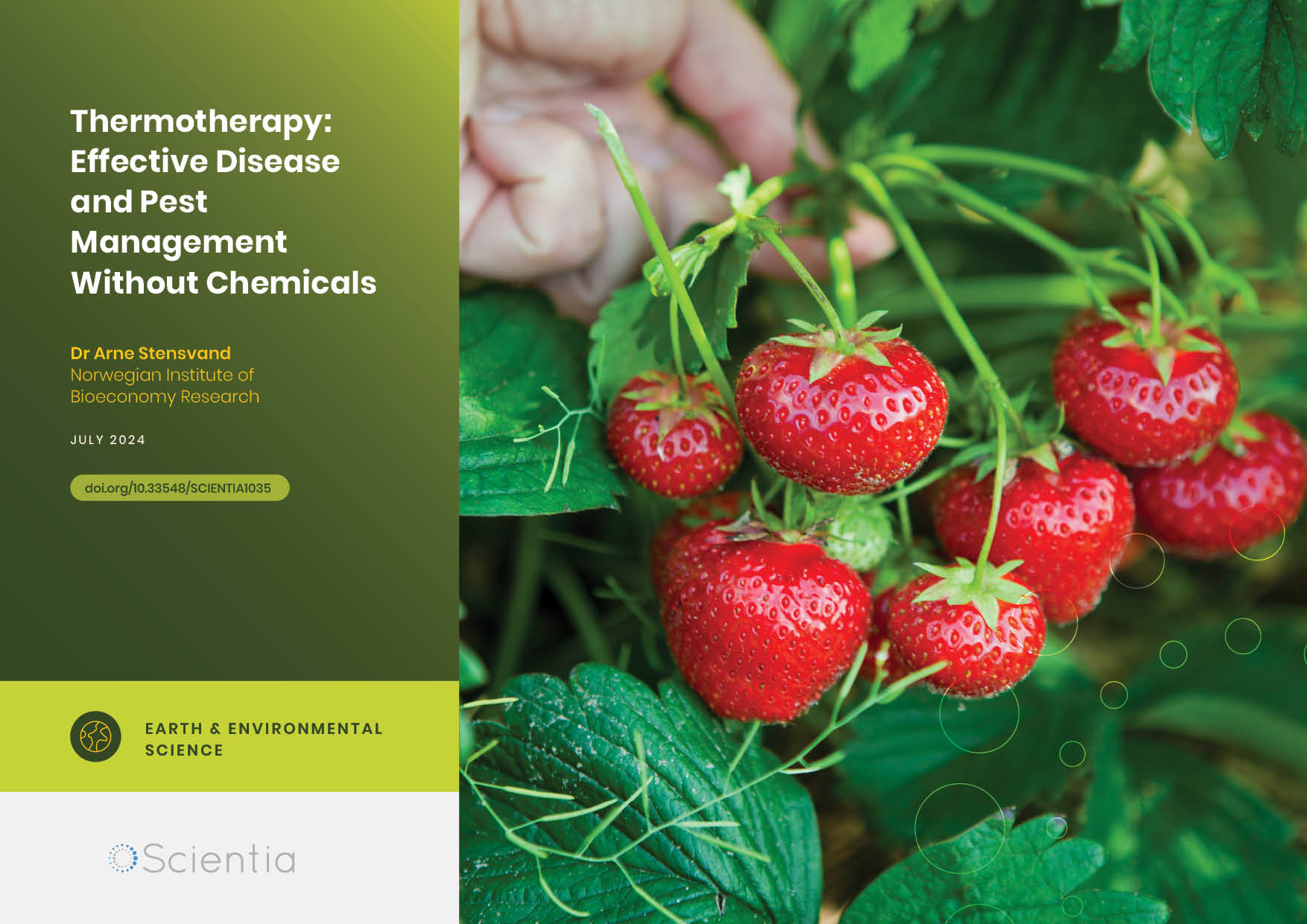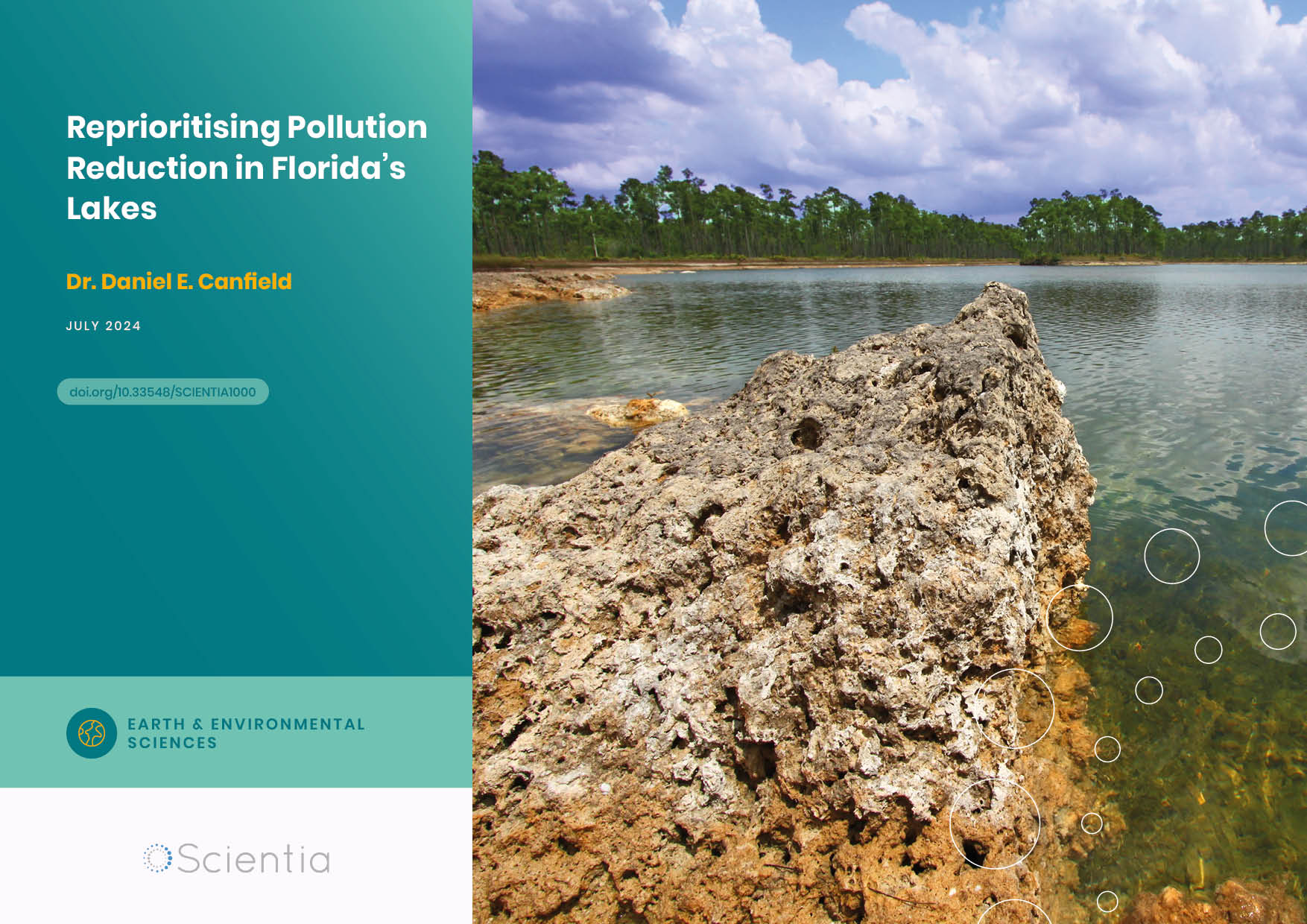Dr Ülo Mander – Tracking Greenhouse Gas Fluxes in Land-based Ecosystems
Land-based, or ‘terrestrial’, ecosystems can act as both a sink and a source of greenhouse gases. An active field of research centres on understanding which environmental parameters turn a carbon sink into a carbon source. Dr Ülo Mander from the University of Tartu in Estonia concentrates his work on predicting greenhouse gas fluxes from terrestrial ecosystems and monitoring how environmental conditions, such as soil moisture and temperature, influence emissions. He aims to use his research to help resolve numerous environmental issues, including climate change.
Nitrous Oxide: A Potent Greenhouse Gas
Over a 100-year period, one kilogram of nitrous oxide (N2O) warms the atmosphere nearly 300 times more than one kilogram of carbon dioxide (CO2). It also stays in the atmosphere for a long time, usually a century or more after it is released. Along with its significant contributions to global climate change, nitrous oxide quickly depletes the ozone layer – our natural shield to the sun’s damaging UV radiation. However, despite the numerous threats it poses, the gas is not regulated or banned in any way.
A variety of nitrogen cycles can produce nitrous oxide. One of the most important sources is denitrification, a process by which microbes transform nitrate (NO3–) into nitrogen gas (N2) – a harmless gas that makes up nearly 80% of the air we breathe. Along the path to nitrogen gas, microbes create nitrous oxide, which is released if denitrification is not completed.
To understand how greenhouse gases, including nitrous oxide, move within the globe and persist in the atmosphere, we must trace its sources and pathways. Studying nitrous oxide is a difficult task, and many questions remain as to identifying the sources of nitrous oxide, finding where it is stored, and tracking how it escapes to the atmosphere. The story is made more complex by the fact that its pathways differ from ecosystem to ecosystem.
With a research focus on terrestrial ecosystems, Dr Ülo Mander of the University of Tartu in Estonia is working to close these knowledge gaps. Dr Mander has focused his attention on identifying the environmental links to nitrous oxide fluxes from three important ecosystems: forests, the tropics, and wetlands.
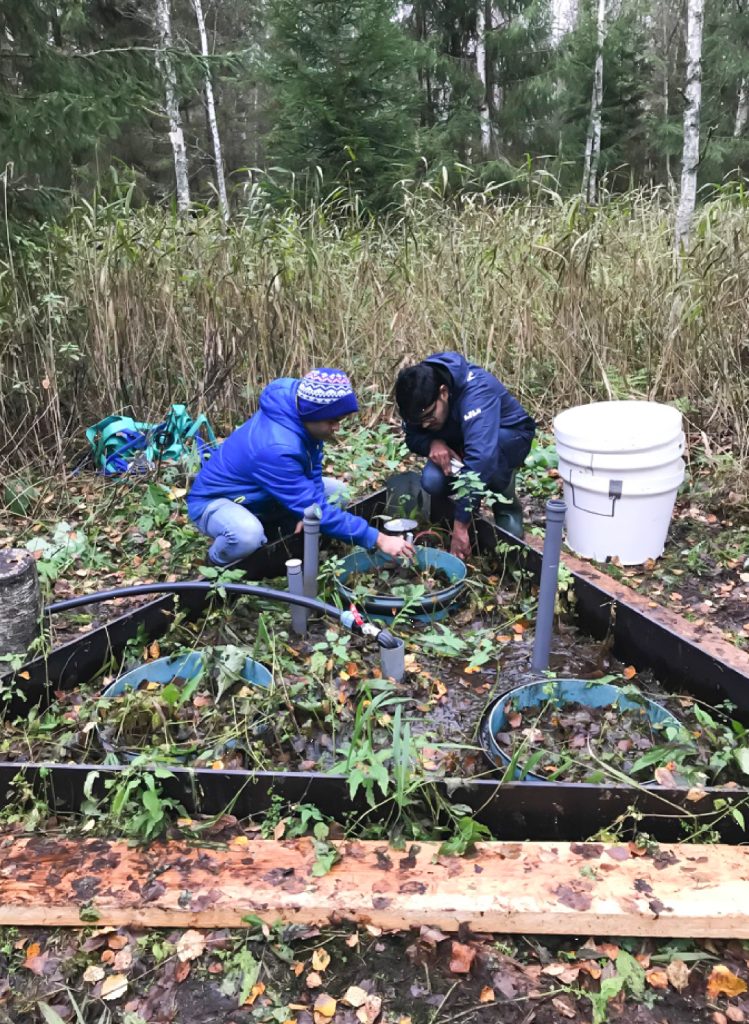
Nitrous Oxide Emissions from Soils
Soils are a significant source of nitrous oxide, owing to underlying microbial production and synthesis of nitrogen, including denitrification. The world’s soils are becoming more nitrogen-rich due to our reliance on chemical fertilisers. Essentially, we are inundating soils with nitrogen, giving microbes more material for denitrification and inevitably leading to greater emissions of nitrous oxide.
Current models used to assess nitrous oxide fluxes consider fertiliser application rates and land-use properties. However, they do not include climatic variables, such as temperature and water availability. Since the microbial activity that churns out nitrous oxide is directly affected by these and other environmental properties, we need a more inclusive model to better predict soil fluxes.
With the goal of creating a model of nitrous oxide emissions applicable to a wide range of ecosystems and environmental conditions, Dr Mander and a large team of international colleagues brought together data from a global field survey of nitrous oxide emissions and soil properties.
With data from every continent except Antarctica, the team assessed 18 parameters to determine which was the best predictor of nitrous oxide. They found that nitrous oxide emissions peaked in soil that held an intermediate water content, likely due to the associated stimulation in nitrification. Thus, soils that are very moist or very dry will have low nitrous oxide emissions, whereas drainage or watering to intermediate soil moisture levels will increase emissions.
The model also showed a weak relationship between nitrous oxide fluxes and soil temperature. However, the relationship was stronger in well-drained areas. Combined with soil moisture results, we can predict that moist soils exposed to warmer conditions, such as those near the equator, have the perfect set of conditions to act as nitrous oxide hotspots.
This is the first model that encompasses continental and tropical ecosystems, in addition to soil temperature and moisture level, into its predictions. Since soil moisture levels and temperatures were teased out of many parameters, across many sites and managements styles, these properties are likely very important across many different ecosystems.
Dr Mander and his colleagues stress that – since they only sampled each site for a few days – the models are only applicable to estimate daily nitrous oxide emissions based on instantaneous environmental conditions. Using this model to estimate long-term emissions would be inappropriate, except for areas that do not experience much seasonal variation, such as the humid tropics.
This study strongly implies that we should prioritise wetland conservation, as wetter soil will decrease nitrous oxide emissions. This is particularly important in the face of longer, warmer summers and more persistent droughts. For areas within the nitrous oxide ‘goldilocks zone’ of soil temperature and moisture, appropriate soil management is critical in reducing emissions.
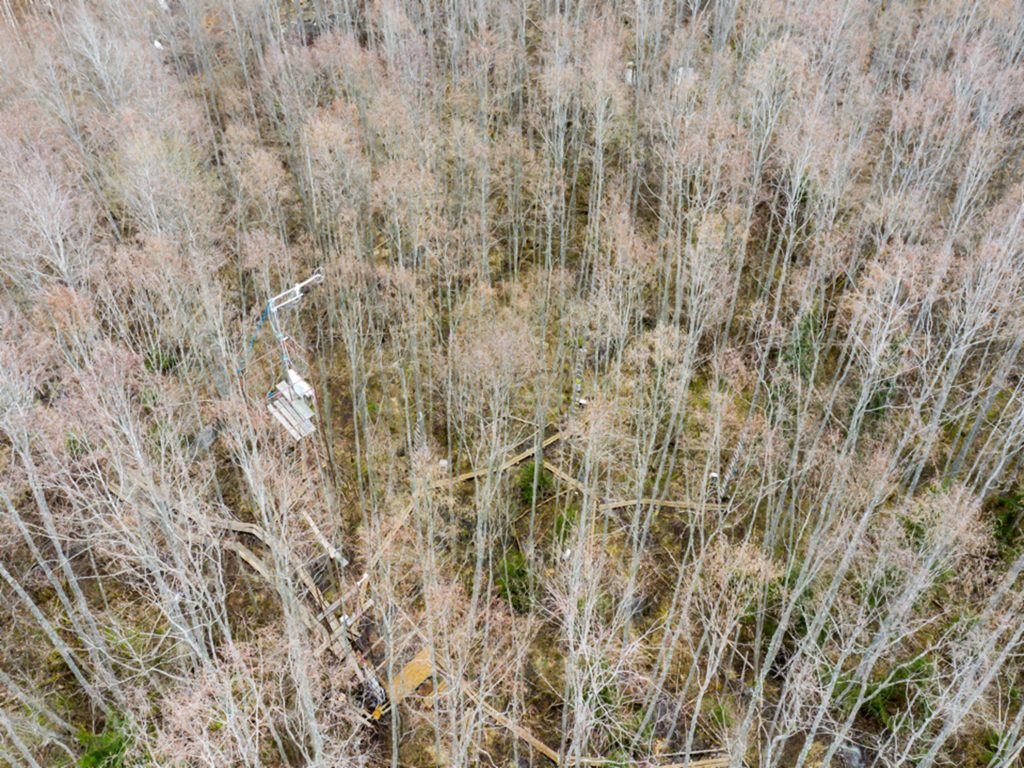
Forest Canopy Mitigates Soil Emissions
With the knowledge that soil water content and temperature can interact to create potent nitrous oxide hotspots, Dr Mander turned his attention to forests. Along with soil, plants also exchange nitrous oxide with the atmosphere from their stems and canopy.
In wooded areas, nitrous oxide emitted from the soil and that from the forest canopy contribute to the total amount of nitrous oxide that enters the atmosphere. However, we lack any measurement of nitrous oxide fluxes on a whole-ecosystem scale, despite the fact that forests are widespread across the Northern Hemisphere.
Dr Mander and a group of international colleagues, including his PhD student Alisa Krasnova, analysed seasonal and annual dynamics of nitrous oxide in a deciduous forest dominated by alder trees. They measured nitrous oxide at the ecosystem scale, as well as at two sub-levels: soils and tree stems. They then related the fluxes to key environmental factors, including soil water content and temperature, to determine whether these properties influence long-term patterns of nitrous oxide fluxes.
At the soil level, there were four periods of intense nitrous oxide emissions that contributed to 56% of the entire flux. The data supported the hypothesis that soil water content is the main factor associated with peaks in emissions. As was found previously, the highest soil nitrous oxide fluxes happened when soil moisture was at an intermediate level, generally occurring at the beginning of a drought.
The researchers did not find any evidence that whole ecosystem fluxes were equal to the sum of soil and stem fluxes. In fact, the overall nitrous oxide emission from the ecosystem was 5.9 times smaller than the soil emissions, indicating that nitrous oxide emitted by the soil may be partially consumed by the forest canopy.
In general, the alder forest was a weaker net source of nitrous oxide than expected. In fact, other reported nitrous oxide emissions from forests may be overestimated, as they do not account for the drop in emissions that occurs between the soil and the forest canopy. This stresses the importance of incorporating tree-stem, canopy, and ecosystem-level fluxes into our understanding of nitrogen budgets, which typically only consider soil-level measurements.
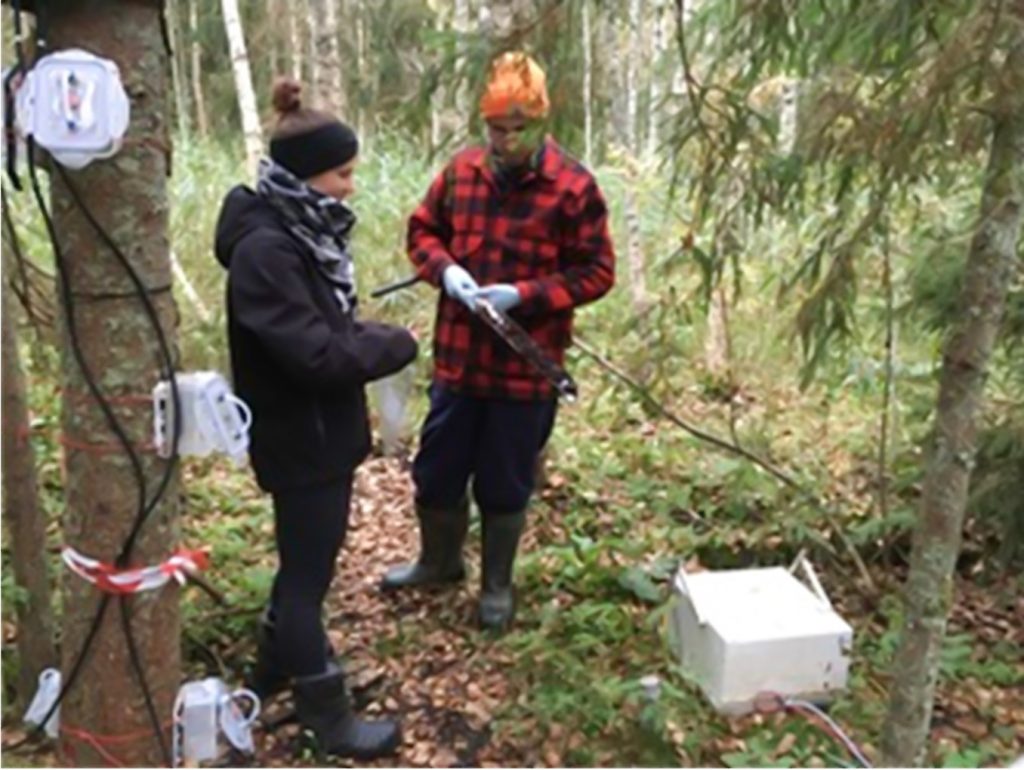
Artificial Wetlands
Creating artificial wetlands is a common way to reduce levels of fertilisers and other pollutants found in freshwater near agricultural fields and urban areas. These engineered wetlands are designed to remove nitrogen compounds through plant uptake and microbial denitrification. However, as denitrification of nitrate is a common way for nitrous oxide to escape into the atmosphere, these artificial wetlands may actually serve as a source of high nitrous oxide emissions.
Dr Mander evaluated nitrous oxide emissions from a constructed wetland used to treat a watershed that provides drinking water for more than 1.5 million people in and around Paris. Dr Mander and his colleagues hypothesised that the structure effectively treats water, but comes at the cost of high nitrous oxide emissions.
The team monitored nitrous oxide fluxes and took water quality measurements, such as dissolved organic carbon and nitrate concentrations. Contrary to their expectations, the watershed was a weak source of nitrous oxide emissions but was effective at removing nitrate.
This result was a welcome surprise and illustrates that we can use artificial wetlands to treat water without worrying about excessive emissions. Future studies on the mechanisms behind the low nitrous oxide emissions are forthcoming.
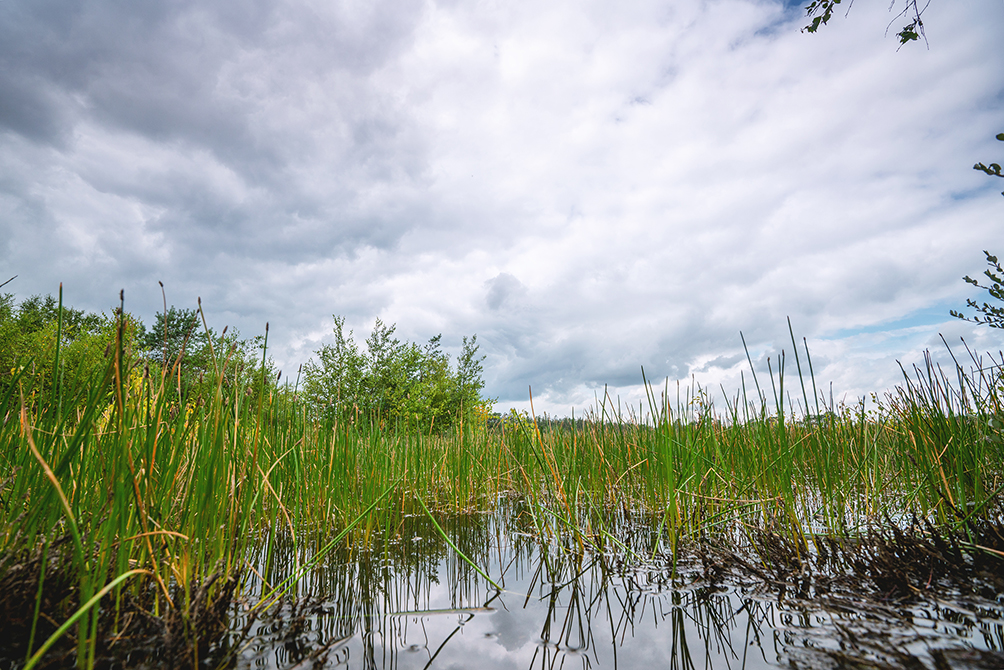
Future Research
Tracking the flux of a greenhouse gas requires a thoughtful combination of creative research, advanced technology, and biological expertise. In other long-term studies, Dr Mander, along with his colleagues and students, has used intriguing methods to answer compelling questions at varying scopes.
He has assessed the genetics of denitrifying microbes, used satellites to analyse 20-year trends of carbon balance in European forests, and monitored emissions in unique areas such as the Peruvian peat swamp.
His work contributes to our global understanding of how these potent gases move within different ecosystems, and which environmental properties influence their fluxes. His research not only highlights the novel mechanisms contributing to global climate change, but also demonstrates the important roles that forests and wetlands can play in stabilising carbon and nitrogen balances.
SHARE
DOWNLOAD E-BOOK
REFERENCE
https://doi.org/10.33548/SCIENTIA783
MEET THE RESEARCHER
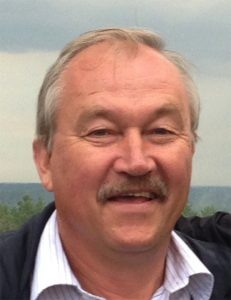
Ülo Mander
Department of Geography
Institute of Ecology and Earth Sciences
University of Tartu
Tartu
Estonia
Dr Ülo Mander has been a leader in ecology and geosciences since the early 1980s. For three decades, Dr Mander has served as the head of the Department of Geography at the University of Tartu in Estonia, where he received his PhD in 1983. His research interests are diverse and include ecological engineering of artificial wetlands, nutrient cycling, and landscape structure analysis. All his work is rooted in deepening our knowledge of geophysical systems to better mitigate pressing environmental concerns. An impactful researcher, Dr Mander has authored more than 200 peer-review papers and given countless conference presentations. He also prioritises mentorship and teaching, with 34 graduated PhD students, as well as numerous more master’s students and visiting international scholars. Currently, Dr Mander’s research focuses on tracking greenhouse gas fluxes through terrestrial ecosystems.
CONTACT
E: ulo.mamdner@ut.ee
KEY COLLABORATORS
Dr Krista Lõhmus, University of Tartu
Dr Kaido Soosaar, University of Tartu
Dr Jaan Pärn, University of Tartu
Dr Mikk Espenberg, University of Tartu
Dr Kuno Kasak, University of California, Berkeley
Dr Ülo Niinemets, Estonian University of Life Sciences
Dr Julien Tournebize, France’s National Research Institute of Agricultural Research (INRAE)
Dr Patrick Megonigal, Smithsonian Environmental Research Centre
FUNDING:
European Union Framework Programmes
European Regional Development Fund
European Social Fund
European Union LIFE Programme
Estonian Research Council
FURTHER READING
Ü Mander, A Krasnova, J Escuer-Gatius, M Espenberg, T Schindler, K Machacova, J Pärn, M Maddison, JP Megonigal, M Pihlatie, K Kasak, Ü Niinemets, H Junninen, K Soosaar, Forest canopy mitigates soil N2O emission during hot moments, npj Climate and Atmospheric Sciences, 2021, 4, 39. https://10.1038/s41612-021-00194-7
Ü Mander, A Krasnova, T Schindler, JP MEgonigal, J Escuer-Gatius, M Espenberg, K Machacova, M Maddison, J Pärn, R Ranniku, M Pihlatie, K Kasak, Ü Niinemets, K Soosaar, Long-term dynamics of soil, tree stem and ecosystem methane fluxes in a riparian forest, Science of the Total Environment, 2021. https://doi.org/10.1016/j.scitotenv.2021.151723
Ü Mander, J Tournebize, M Espenberg, C Chaumont, R Torga, J Garnier, M Muhel, M Maddison, JD Lebrun, E Uher, K Remm, J Pärn, K Soosar, high denitrification potential but low nitrous oxide emission in a constructed wetland treating nitrate-polluted agricultural run-off, 2020, 779. https://doi.org/10.1016/j.scitotenv.2021.146614
B Viru, G Veber, J Jaagus, A Kull, M Maddison, M Muhel, M Espenberg, A Teemusk, Ü Mander, Wintertime Greenhouse Gas Fluxes in Hemiboreal Drained Peatlands, Atmosphere, 2020, 11, 731. https://doi.org/10.3390/atmos11070731
J Pärn, JTA Verhoeven, K Butterbach-Bahl … Ü Mander, Nitrogen-rich organic soils under warm well-drained conditions are global nitrous oxide emission hotspots, Nature Communications, 2018, 9, 1135. https://doi.org/10.1038/s41467-018-03540-1
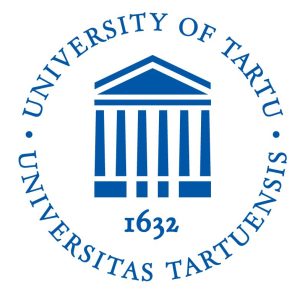

REPUBLISH OUR ARTICLES
We encourage all formats of sharing and republishing of our articles. Whether you want to host on your website, publication or blog, we welcome this. Find out more
Creative Commons Licence (CC BY 4.0)
This work is licensed under a Creative Commons Attribution 4.0 International License. 
What does this mean?
Share: You can copy and redistribute the material in any medium or format
Adapt: You can change, and build upon the material for any purpose, even commercially.
Credit: You must give appropriate credit, provide a link to the license, and indicate if changes were made.
SUBSCRIBE NOW
Follow Us
MORE ARTICLES YOU MAY LIKE
Dr Robert Larkin | Cultivating Change to Improve Soil Health and Increase Potato Yield
Environmental quality and food production are facing the pressing challenges of climate change and global population growth. Dr Robert Larkin from the United States Department of Agriculture-Agricultural Research Service (USDA-ARS) and a team of plant scientists developed and tested a range of crop management systems to help overcome these compounding challenges. Their work is improving soil health and increasing the yield of potato crops, contributing to the future food security of nations.
Dr Arne Stensvand | Thermotherapy: Effective Disease and Pest Management Without Chemicals
Dr Arne Stensvand and his team at the Norwegian Institute of Bioeconomy Research are developing physical methods of pest reduction in plants. The team is specifically interested in strawberry plants, for which pest management is vital for crop success. They are pioneering thermotherapy as a heat treatment method to provide an environmentally effective and economically sound non-chemical approach to pest management.
Dr. Daniel Canfield | Reprioritising Pollution Reduction in Florida’s Lakes
Florida’s landscape is dotted with thousands of lakes that reflect regional geology, topography and anthropogenic activities. Phosphorus and nitrogen are critical nutrients for maintaining the wide range of biological production expressed across Florida, but excessive inputs of these nutrients due to past human activities impair many waters. There has been a long history of work aiming to address associated water quality pressures, and Dr. Daniel Canfield at the University of Florida has been at the centre of these efforts for over 40 years. Now, with the correction of point-source nutrient inputs, Dr. Canfield proposes that holistic lake management, including the integration of in-lake management strategies with a focus on organic sediment removal, should be much more prominent on the US government’s agenda to provide faster restoration of stakeholders’ lake usability.
Dr Jon Tore Lieng | Dynamically Installed Anchors for Floating Offshore Turbines
Effectively harnessing offshore wind presents a valuable opportunity to increase energy supplies. Floating wind turbines present several advantages over traditional fixed turbines in more shallow waters. Dr Jon Tore Lieng from Deep Sea Anchors and colleagues have developed a type of dynamically installed anchor to hold the structures in place while reducing both the costs and complexity associated with installation where cohesive seabed sediments are realised.



